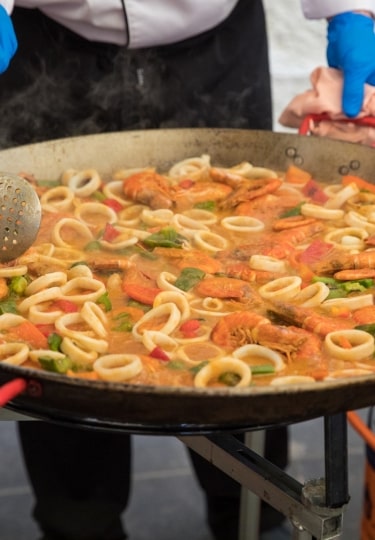From the colder northern countries to beaches of the Mediterranean, European food encompasses classic, world-renowned cuisines.
There are also increasing forays into experimental culinary scenes everywhere, from the Scandinavian countries to Britain, Spain, and Greece.
Whether a stew, a sandwich, or a dessert, each country has its own iconic dishes and myriad different variations on them making for rich rewards for the gourmet traveler. Served from the pubs of Ireland to the bistros of France, you’ll find dozens of iconic regional dishes guaranteed to make the mouth water.
Boeuf Bourguignon, France
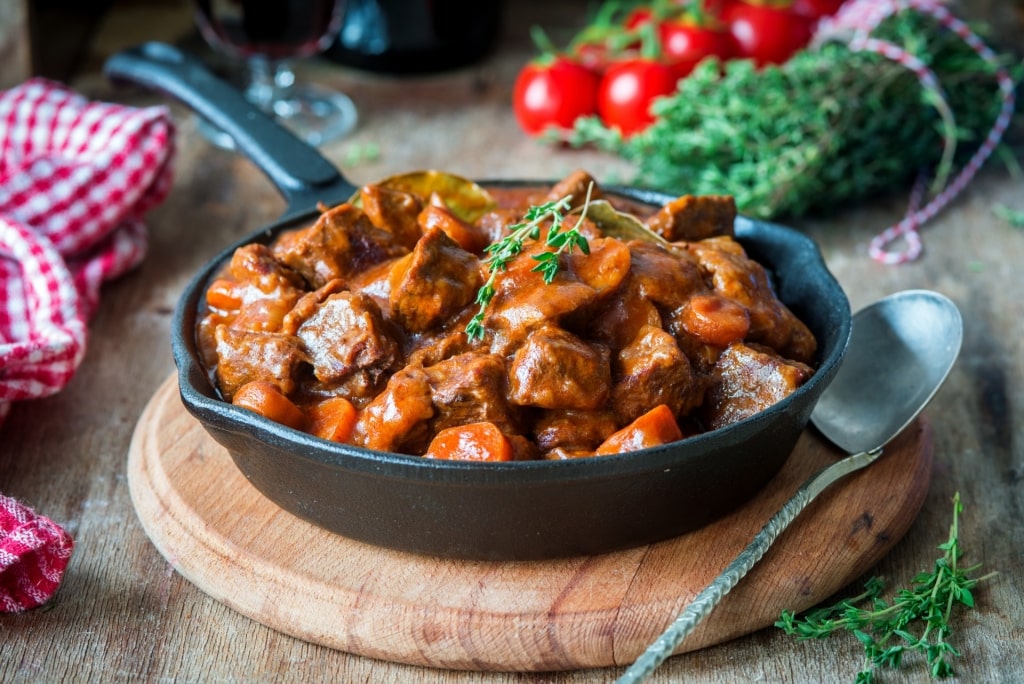
Boeuf bourguignon
Rich beef, slow cooked in Burgundy wine alongside fresh vegetables and bacon, until it’s falling off the fork… there are few dishes that bring to mind the petite bistros of France than boeuf Bourguignon.
Served with slices of crusty baguette and a large glass of red, this is rustic French food at its best, with incredible ingredients handled with care and respect. A great alternative for those who aren’t fans of red meat is coq au vin—a remarkably similar dish with chicken or rooster replacing the beef.
Fish ’n’ Chips, England
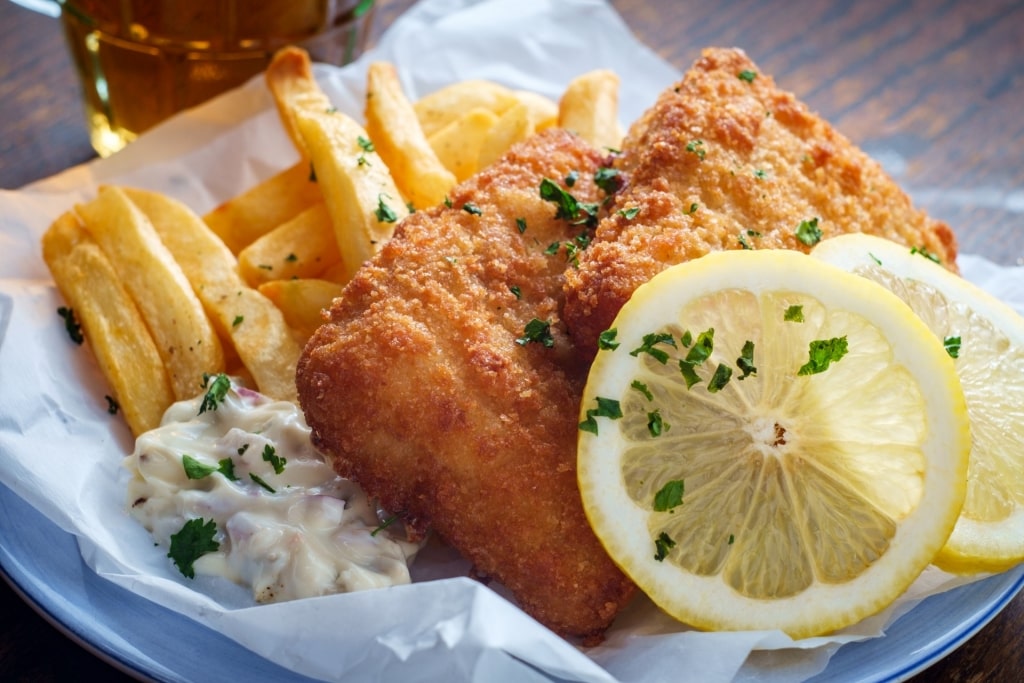
Fish ’n’ chips
It’s easy to think that fish ’n’ chips is the same meal around England, but there are a number of variations. The major change, of course, is the type of fish used.
Cod is the most popular option with the more flavorsome haddock coming a strong second, while rock salmon (dog fish), skate, pollock and other white flaky fish are also options.
The second biggest change comes from the frying fat used. While vegetable oils were all the rage for a while, the best “chippies” have now reverted to the more traditional beef dripping (fat rendered from roast beef) which again adds a unique flavor.
The dish can be accompanied by “mushy” (mashed) peas or curry sauce depending on preference, with salt and malt vinegar as condiments. And it always tastes better wrapped in paper and served as take out.
Souvlaki, Greece
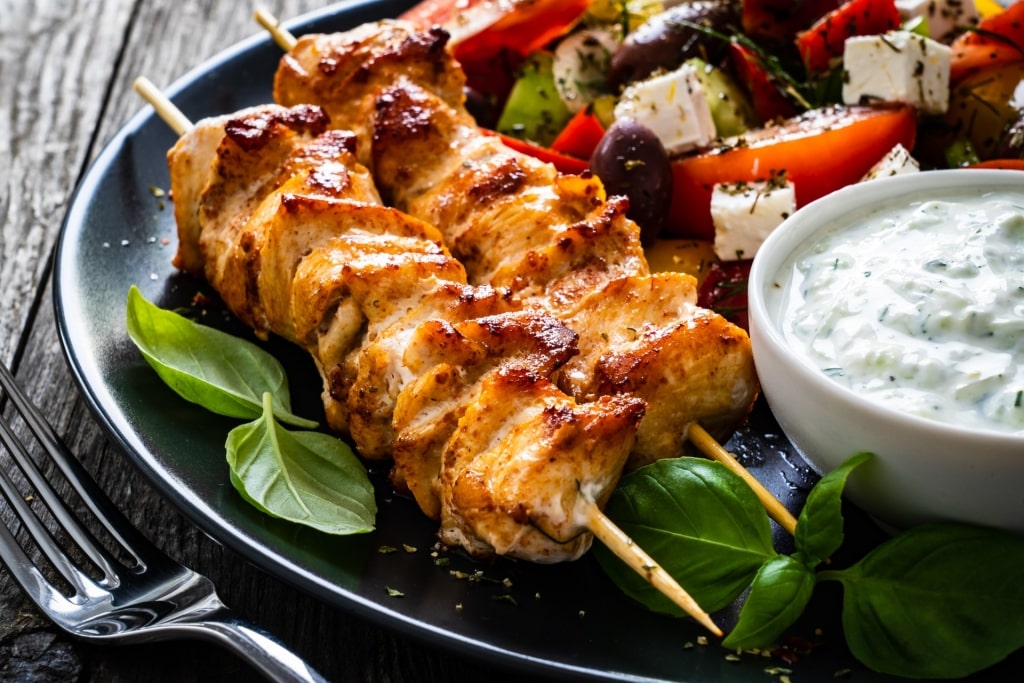
Souvlaki
The quintessential street food of Greece is another dish that comes in many forms. The word itself comes from the word souvla, or skewer, and refers to any meat or fish that is cubed, placed on bamboo skewers and grilled on an open fire.
They can be eaten by hand from the stick with a simple piece of bread, or wrapped in a soft pita bread with tomato, onion and tzatziki (yoghurt, cucumber, and garlic sauce). Pork is the most traditional type of meat but chicken, lamb, and even ground beef versions can also be found.
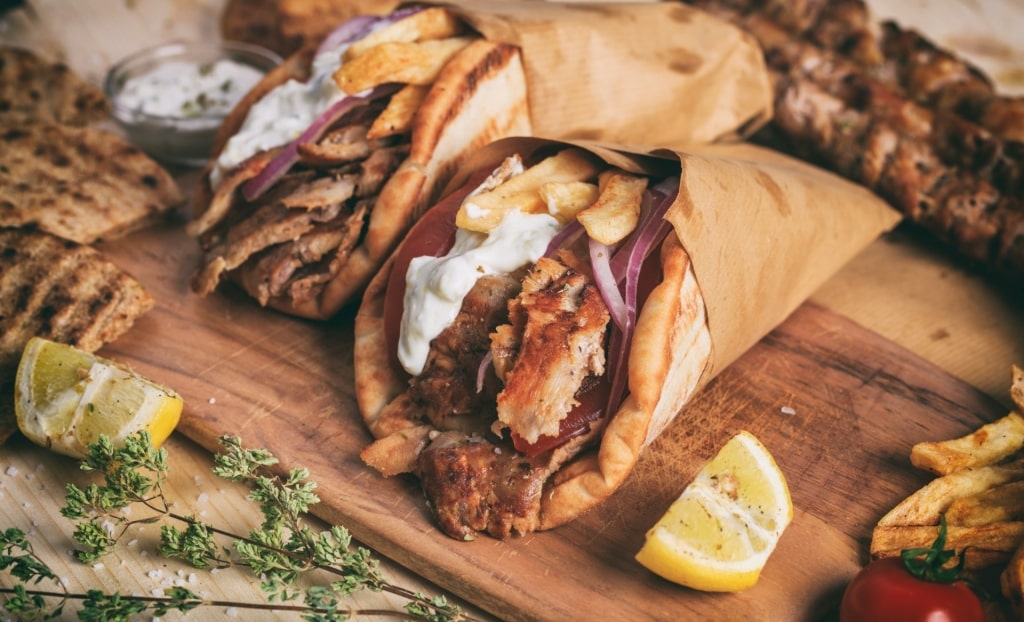
Gyro
Increasingly popular in souvlaki houses is to have the meat cooked gyros style (large slabs of meat cooked on a rotating metal skewer), while other additions to the wrapped pitta can include fries, sliced green peppers, and fresh parsley.
Read: The Ultimate Guide to Food in Athens
Pizza, Italy
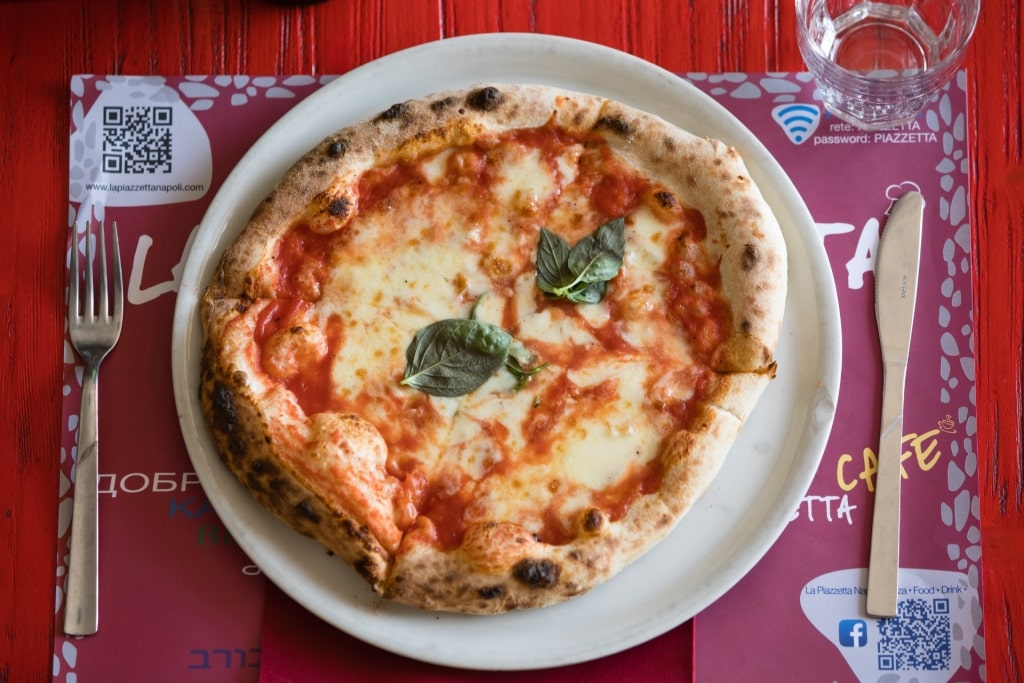
Pizza
While pizza can now be found the world over, it’s hard to imagine that this iconic European food originated only in the late 19th century when King Umberto I and Queen Margherita paid a visit to Naples.
Each region now has its own variation on the classic topped flatbread, but the best can still be found in the port city where pizza is said to have originated.
Not only is Naples home to the oldest pizzeria in the country, Antica Pizzeria Port’Alba, but it also hosts L’Antica Pizzeria da Michele, supposedly the best pizza in the world. This is a fact attested to by the long lines that form as the restaurant does not accept reservations and tables are allocated on a first-come, first-served basis.
Paella, Spain
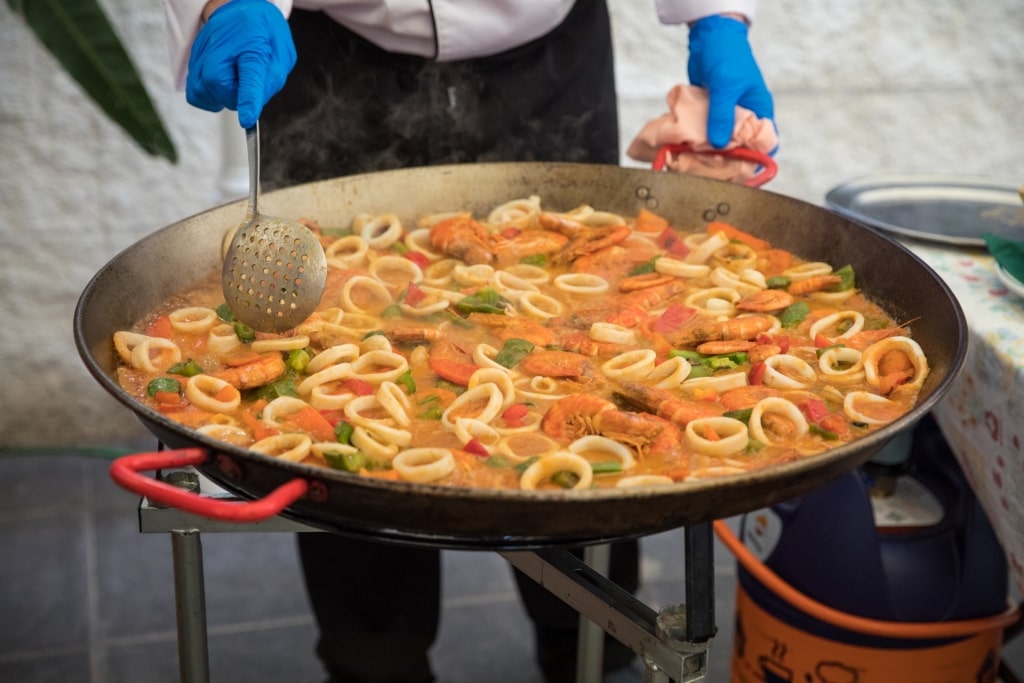
Paella
Originating from Valencia, paella is the quintessential Spanish dish. Taking its name from the wide, shallow pan in which it is cooked on an open fire, the dish consists of short-grain rice, stock, wine or sherry, and vegetables, alongside herbs including saffron which gives the rice its deep yellow color.
Traditionally served with chicken or rabbit, paella de marisco is the seafood version, while diners who can’t decide and want the best of both worlds can opt for paella mixta (mixed paella).
Read: The Ultimate Valencia Food Guide
Escargots, France
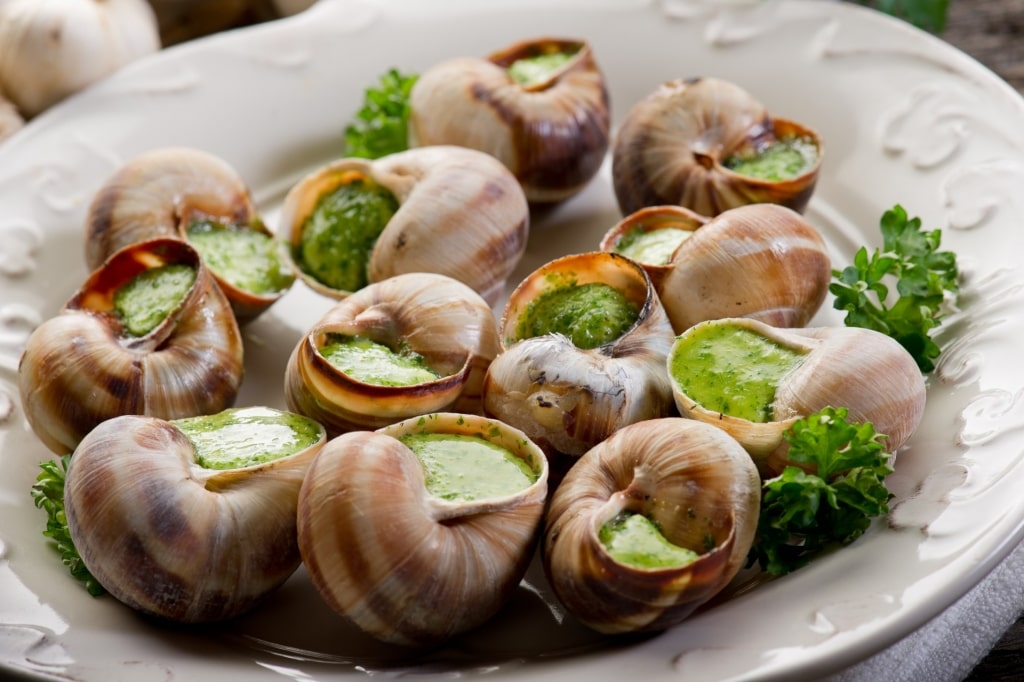
Escargots
While snails are synonymous with French cuisine, there’s evidence that they were eaten in Greece as long ago as 10,000 BC and are also popular across the entire Mediterranean.
In France, they’re delicately and uniquely braised in butter, garlic and parsley and can be served with shells or without.
Critics say all the flavor comes from the braising liquor rather than the snails themselves, but they’re still one of the most popular items on French menus, especially during times of celebration such as Christmas and New Year.
Yorkshire Puddings, England
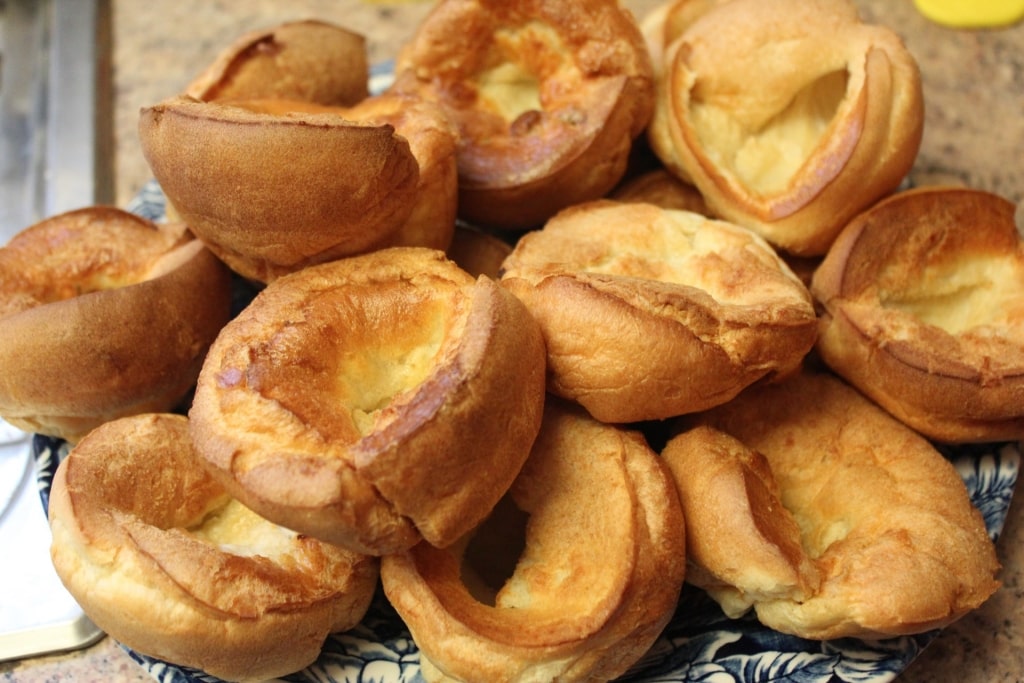
Yorkshire puddings
In another example of English being perhaps the most widespread but most confusing language in the world, Yorkshire puddings are not a dessert. Rather, they’re a savory accompaniment to the UK’s classic Sunday lunch of roast beef cooked on the bone with vegetables.
Made from a batter of whisked flour, eggs, and milk and cooked in a super-hot oven so they rise until light and fluffy, Yorkshire puddings make a perfect vessel for holding the gravy that accompanies the meal.
Arancini, Italy
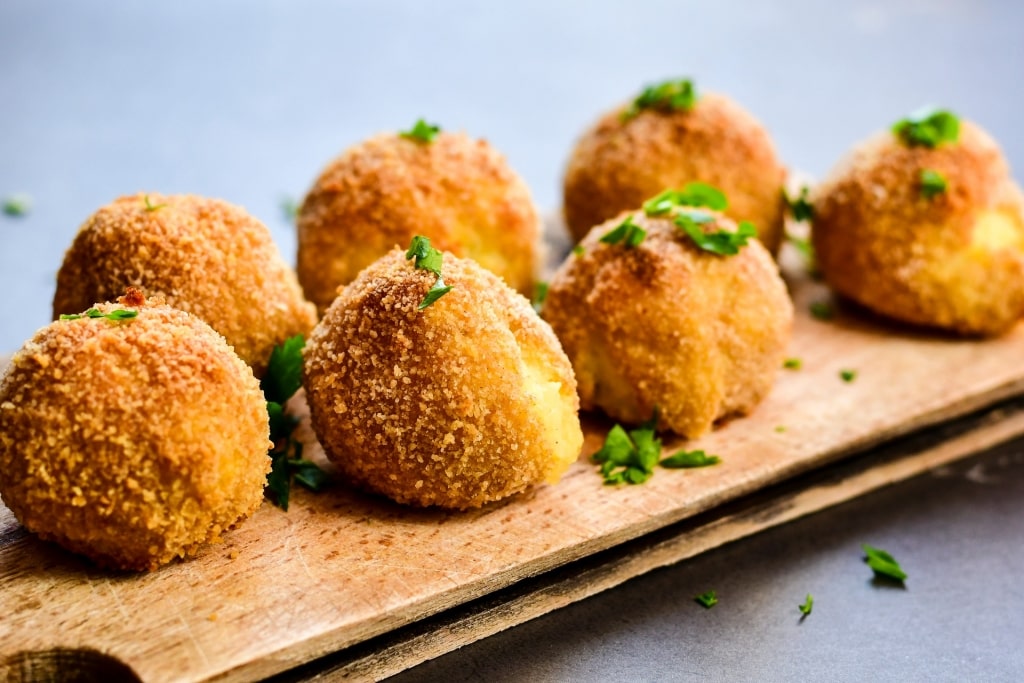
Arancini
Arancini are a type of rice ball, coated with breadcrumbs and deep fried, and often stuffed with tasty fillings from delicate mozzarella to rich beef ragu.
Originating from Sicily but now found all over Italy, the original and best ones can still be found from the street vendors in Palermo, the Sicilian capital, which is also renowned for its fabulous architecture.
In some cafés, this popular Sicilian food can be conical in shape, a nod to Mount Etna, the active volcano that towers over Sicily’s east coast. Arancini are irresistible; many would say some of the best food in Europe, especially with an aperitivo.
Tapas & Pintxos, Spain
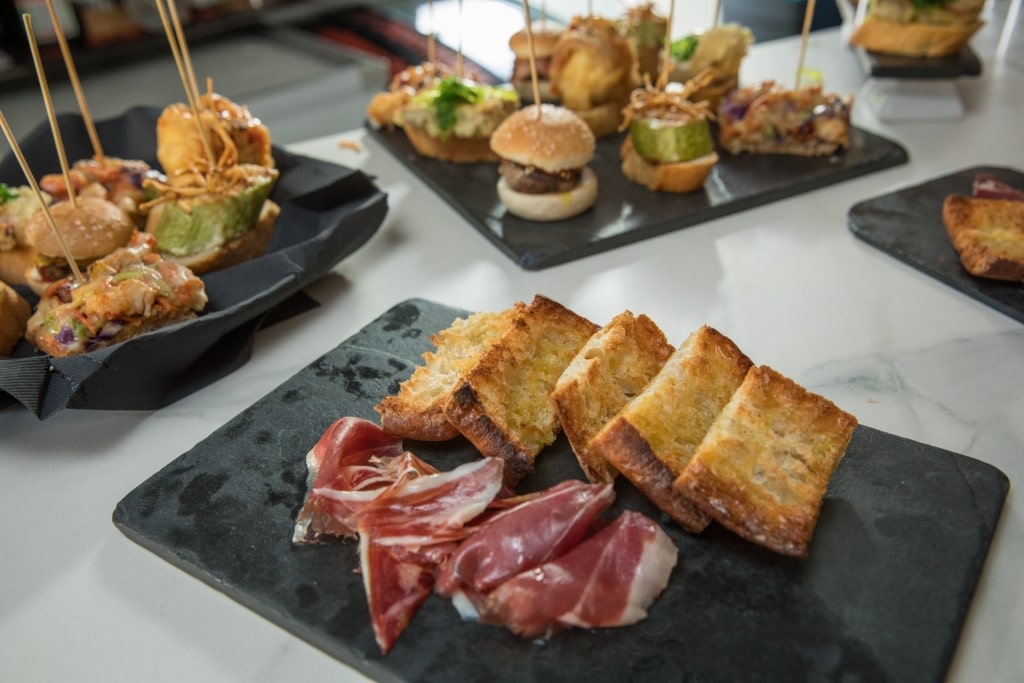
Tapas and pintxos
Spain is known for its tapas, which are small plates of hot or cold food served in many Spanish bars, cafés, and restaurants. Originally an appetizer or a snack served with alcohol, the new tradition is now to make a meal by combining several different tapas dishes together.
Popular options include patatas bravas (potatoes in hot tomato sauce), albondigas (smoky meatballs), boquerones (pickled anchovies) and pimientos de Padrón (fried and salted green peppers). A close relative of tapas are pintxos, small snacks with a piece of bread at the base, all skewered on a toothpick for ease of eating.
Currywurst, Germany
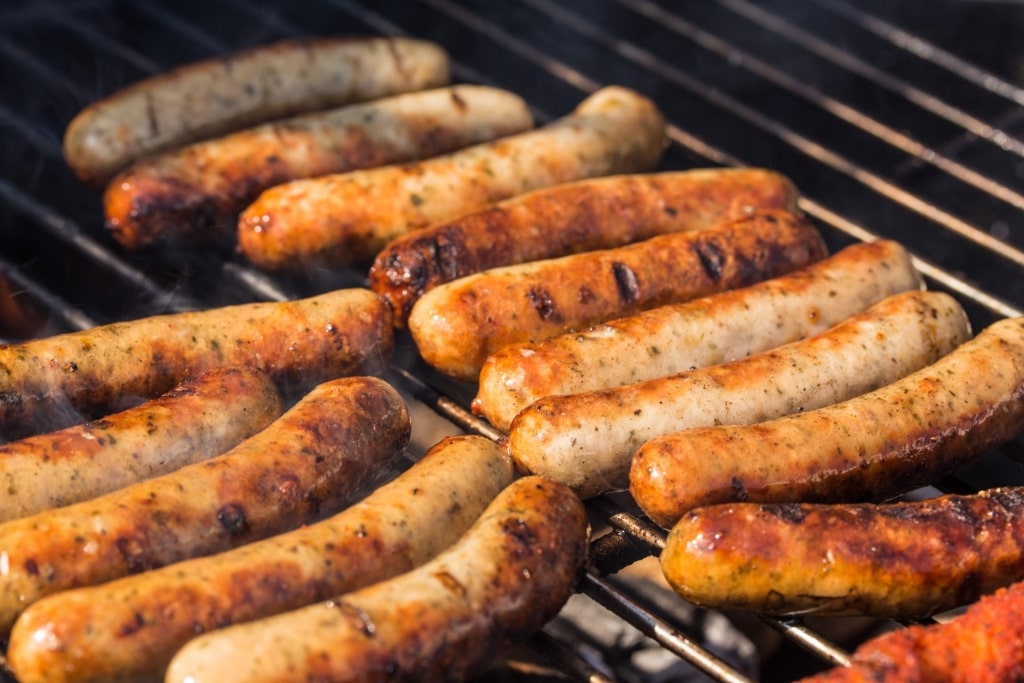
Currywurst
Germany is sausage-obsessed, with countless different types on offer, of which the most popular is bratwurst. Originating from the 14th century, these barbecued or fried sausages are made of coarsely chopped pork and spices with some 40 different variations. The most popular is currywurst.
Now Germany’s most popular sausage, the dish was created in 1949 when a Berlin woman managed to source ketchup and curry powder from British soldiers stationed in the city after World War II and combined them as a topping. It’s now thought more than 800 million currywurst are sold annually across the country.
Belgian Waffles, Belgium
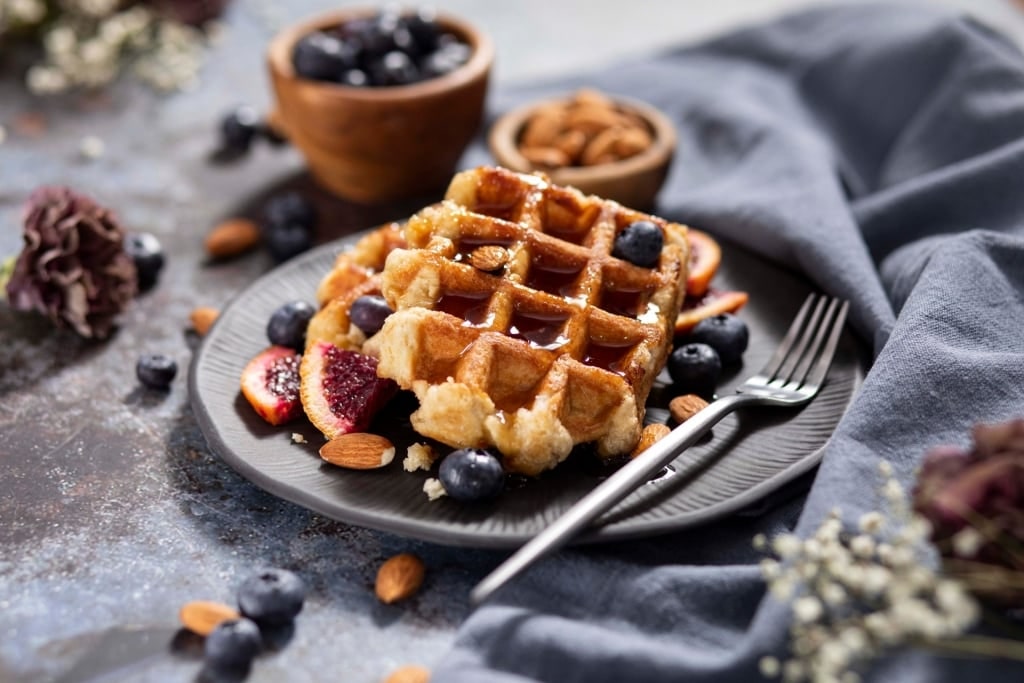
Belgian waffles
Compared to their American counterparts, Belgian waffles are made with a lighter batter and have larger squares and deeper holes. This means they can hold even more toppings.
Often eaten for breakfast or sometimes as a dessert, they can come with whipped cream, chocolate spread, syrup, confectioner’s sugar, or any kind of fruit or ice cream.
There are two main variants available. Brussels waffles are lighter still with even deeper pockets, while Liège waffles are sweeter and chewier.
Poffertjes, Netherlands

Poffertjes
Originating from when Catholic priests were experimenting to find a more palatable version of Communion bread, poffertjes are now the number one sweet in the Netherlands.
A small pancake-like batter treat, they are made from buckwheat and yeast and fried or cooked in special poffertjes irons, not dissimilar to those used to make waffles. The pancakes can be topped with powdered sugar, butter, syrup, or the Dutch liqueur advocaat, while savory versions are served with Gouda cheese.
Pastel de Nata, Portugal

Pastel de nata
One of the most iconic Portuguese treats, pastel de nata (or pastel de Belém) is a sweet custard tart that also has religious origins. It’s thought they were first created by monks at a time when egg whites were used to starch clothes and a use had to be found for the yolks so they wouldn’t go to waste.
The tarts can be found around the country and are usually eaten at breakfast with a strong coffee. Those looking for the most authentic version can visit the Fábrica de Pastéis de Belém, said to be the custodian of the original recipe. It’s located just a short walk from Jerónimos Monastery in Lisbon.
Köttbullar, Sweden

Köttbullar
Famously sold by the check-outs in Sweden’s global flat-pack home furnishings store, the country’s meatballs are a legendary dish in the country.
First appearing in a 1755 cookbook by the legendary chef Cajsa Warg, the recipe calls for a mix of ground beef and pork, breadcrumbs, eggs and seasonings. The popular Scandinavian food, smaller than those seen in Italian cuisine, are then pan-fried and served with a white cream sauce.
Hákarl, Iceland

Hákarl
There are some quite off-the-wall dishes in Icelandic cuisine, but perhaps none more so than hákarl—“rotten” shark. The shark is buried in the ground, fermented and then hung to dry before being cut into cubes and served as a delicacy at major events.
It’s an acquired taste for sure—and thanks to the large amounts of ammonia present it smells much, much worse than it tastes. This is why newbies are invited to pinch their nose on the first bite.
It’s traditionally washed down with a shot of the local firewater Brennivín, a clear spirit also known as “black death”, for extra culinary kudos.
Fårikål, Norway

Fårikål
Fårikål is one of those dishes that tastes much better than it looks or sounds. This traditional stew, the national dish of Norway, consists of mutton on the bone, cabbage and whole black peppers. This ensemble is braised in a clear liquor that is sometimes thickened with wheat flour.
The dish is served alongside skin-on boiled potatoes. It’s said that 70% of the Norwegian population will eat fårikål at least once a year.
Read: Norwegian Food: Iconic Dishes to Try
Smørrebrød, Denmark
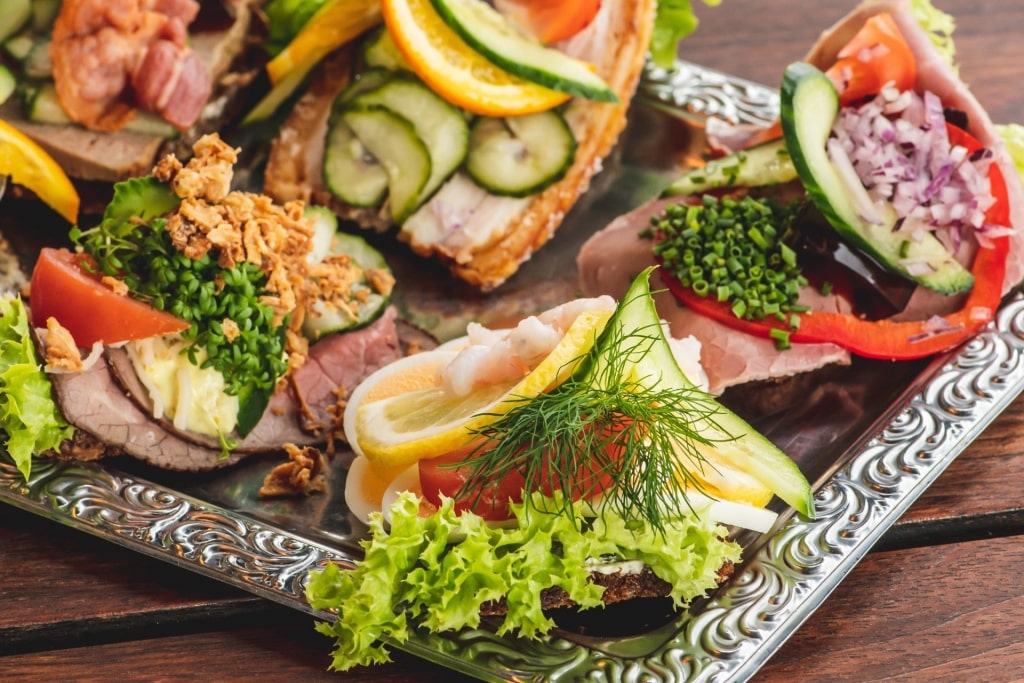
Smørrebrød
Alongside Tivoli funfair and the Little Mermaid statue in Copenhagen, smørrebrød is one of the cultural highlights that Denmark is known for. In their simplest form they could be described as an open sandwich, but they’re much more than that.
Key to smørrebrød is the bread, a thin layer of rich, dense rye sourdough on which toppings are piled with the skill of a sculptor creating a work of art. These can range from thin slices of cured meat, through pickled herring, cheeses, thinly sliced pickles and much more.
Smørrebrød is often served as an array of small sandwiches on one plate. There’s a strict eating order etiquette that goes herring, other fish, meat and, finally, cheese.
Read: The Ultimate Copenhagen Food Guide
Karjalanpiirakka, Finland
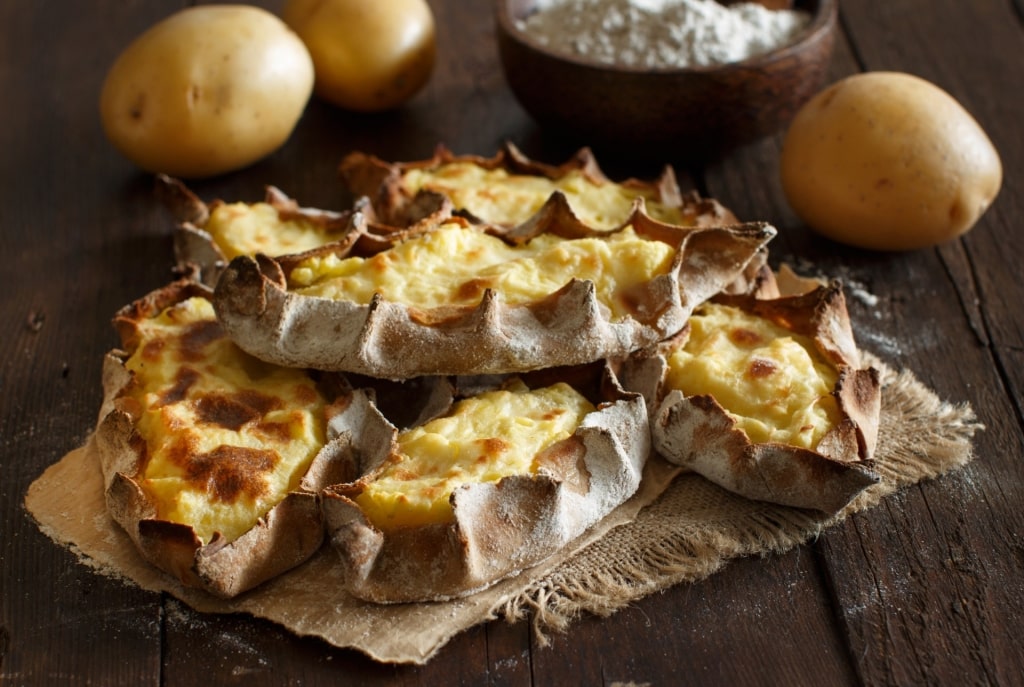
Karjalanpiirakka
Karjalanpiirakka (Karelian pies) are another Scandi dish based on a rye dough—this time baked as a pie. First detailed in the 17th century in the Karelia region that spans Finland and Russia, the pies are filled with a savory rice porridge or, more traditionally, a porridge of barley, rye, oats and pea flour.
Today though, inventive chefs have devised many different versions. These consist of different shaped pastries and fillings stuffed variously with mixtures that contain carrots, eggs, mashed potatoes and semolina, while sweet versions are also increasingly popular.
Irish Stew, Ireland
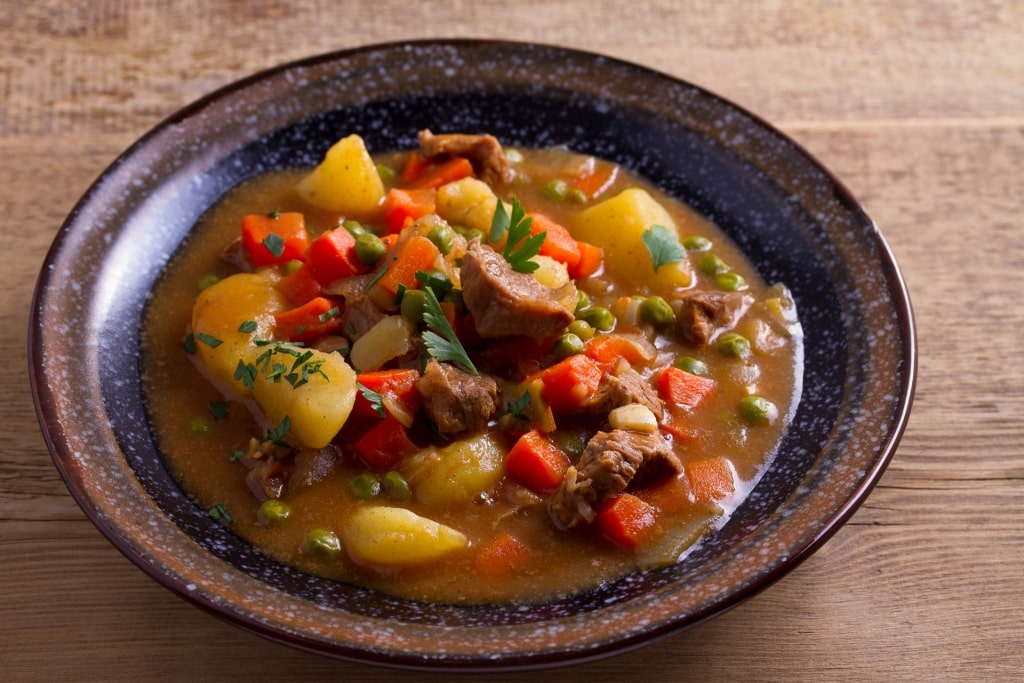
Irish stew
Not unlike Norwegian Fårikål, Irish stew is a dish usually made with mutton and vegetables, stemming from less prosperous times when sheep had to have outlived their usefulness for wool before being slaughtered for food. Traditionalists would argue that the dish should only include mutton, potatoes, onions, and water.
As with all traditional dishes, a number of variations exist, adding other vegetables such as carrots and peas, as well as grains including pearl barley.
Served in almost every pub in Ireland, Irish stew should be accompanied by one of the island’s famed dark stout beers and a chunk of soda bread.
Lokum, Turkey
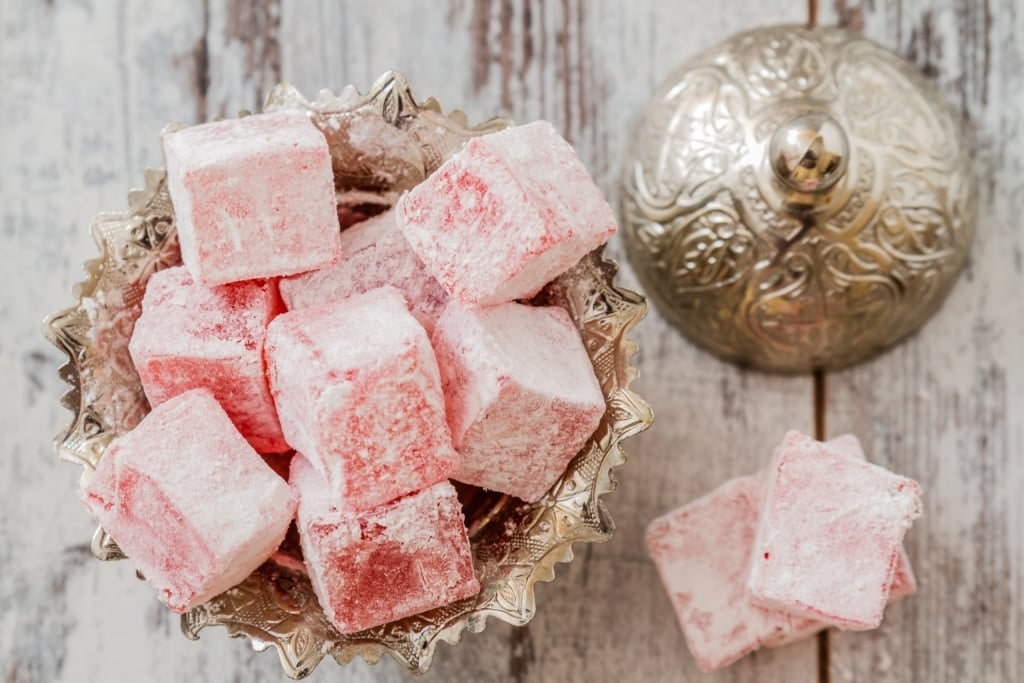
Lokum
Also known as Turkish delight, lokum is a soft jelly sweet made of starch and sugar, cut into cubes and dusted with fine confectioners’ sugar.
Sold around the country, the jelly is often flavored with rose water, lemon, orange, or the distinctive taste of mastic gum that is so popular in Turkey and Greece.
Premium versions can see the jelly contain nuts or dates, while chocolate coverings are also increasingly on-trend.
The best places to buy in Istanbul are around the Sirkeci and Eminonu districts. Ali Muhittin Hacibekir is said to be the oldest purveyor with its branch (there are three in the city) near the Istanbul Mercantile Exchange in the Old Town dating from 1777.
Stampot, Netherlands
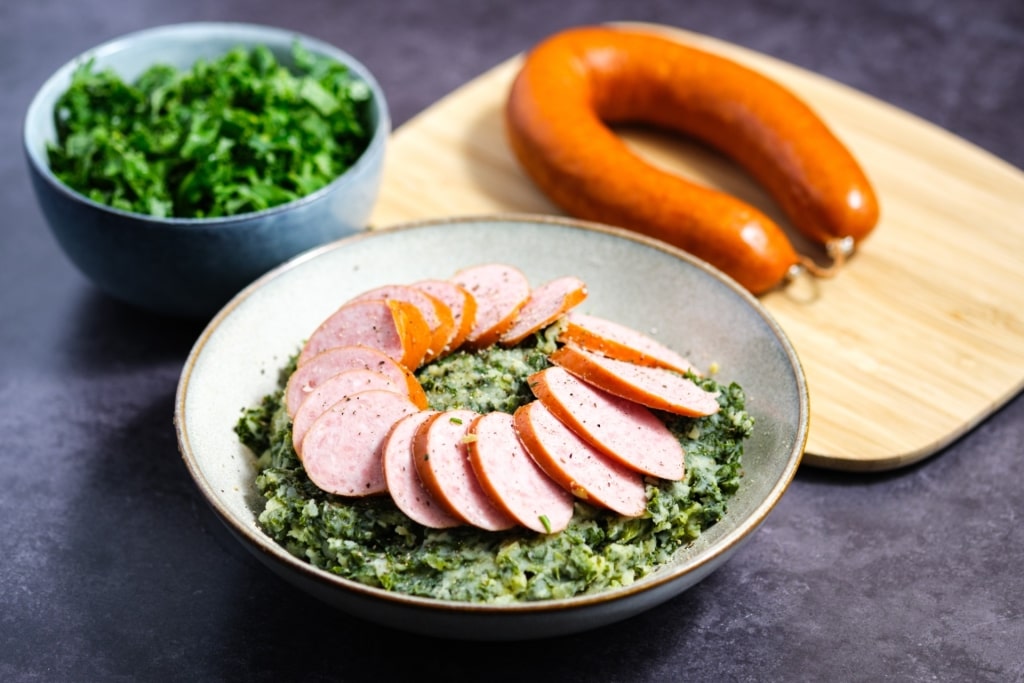
Stampot
Hearty, filling, and tasty, stamppot is the Dutch equivalent of what British people would know as “bubble and squeak”, mashed potatoes combined with one or more other vegetables.
It’s said to have originated in the late 16th century when the Spanish fled the Siege of Leiden, supposedly leaving behind a pot of cooked carrots, onions, and meat, to the delight of starving locals. Whether that’s true is open to debate, but whatever the origins, there are several versions found around the country including with kale, or boerenkool, carrots and onions, or hutspot, or sauerkraut.
Stamppot is usually eaten with a juicy smoked sausage called rookworst with a generous ladle of meat gravy poured on top to create the ultimate in comfort foods.
Haggis, Scotland
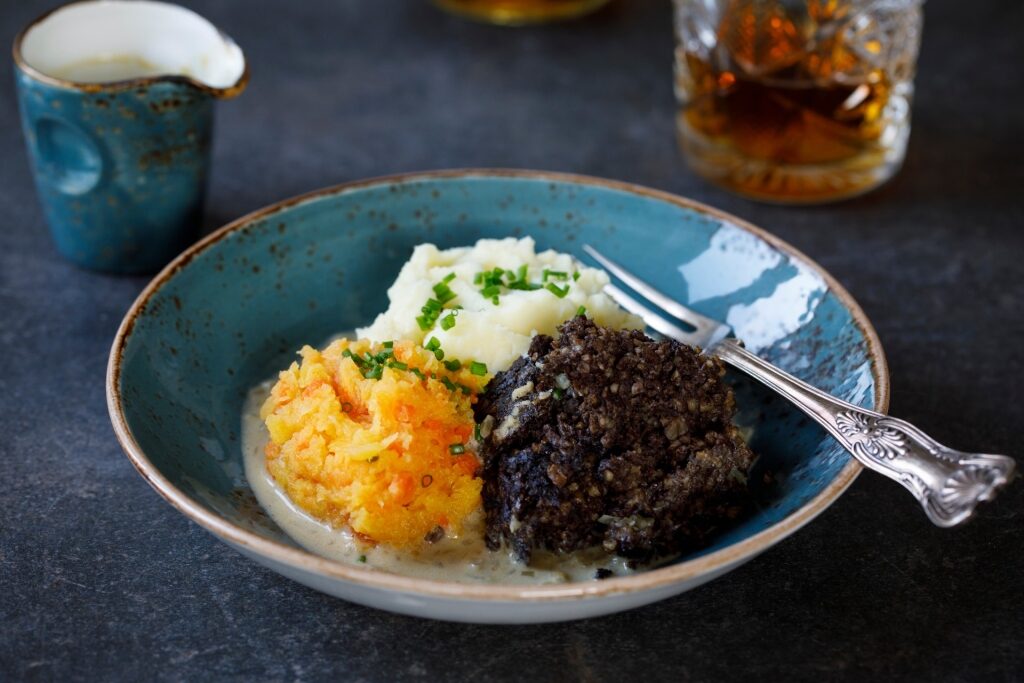
Haggis
The ingredients of haggis can seem quite off-putting. This Scottish dish, made of ground sheep heart, liver, and lungs, mixed with onion, oatmeal, suet, and spices, all encased in a sheep’s stomach and simmered for hours, is likely to have most running for the Highlands. But that does the dish a disservice. When it’s done right it’s rich, peppery, earthy, and super comforting.
Haggis originates from the days when nothing went to waste—the original nose-to-tail dining—and it plays a prominent role in the country’s very identity. Visit Scotland on Burns Night, celebrating the famed 18th-century poet, and the haggis will be the guest of honor, to the point it is brought into a meal accompanied by a piper. Traditionally served with “neeps and tatties”— mashed potato and turnip—it is now also making its way into fusion dishes such as Indian-influenced haggis pakora.
This being Scotland, where almost anything can be fried, you’ll also find battered and deep-fried versions in local fish and chip shops. Vegetarians need not miss out; there are some delicious veggie and vegan versions of haggis, containing oats, lentils, mushrooms, and spices.
Stuffat tal-Fenek, Malta
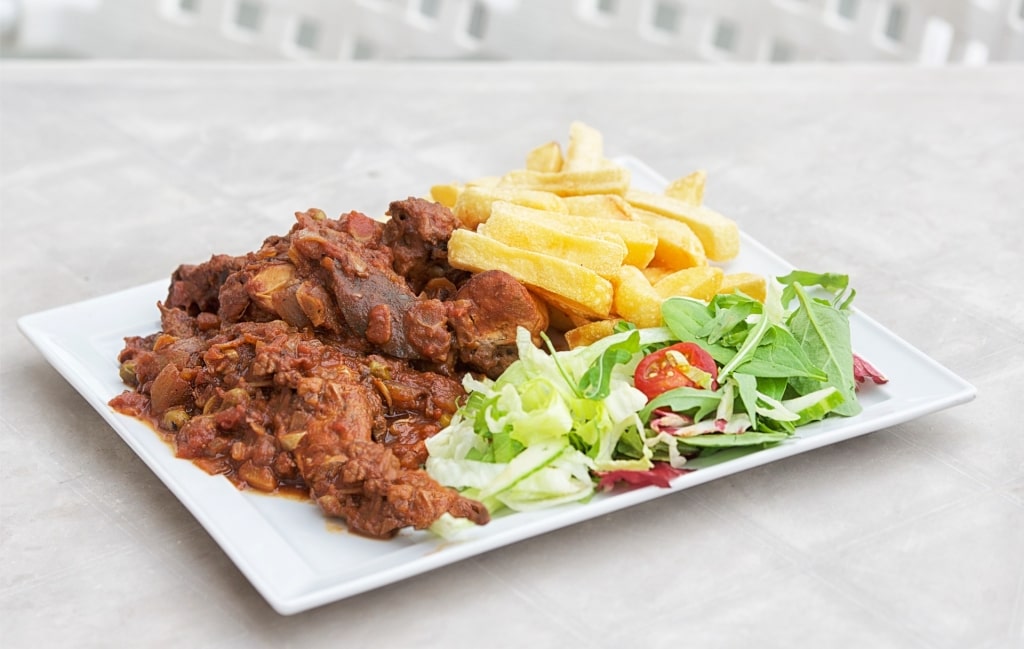
Stuffat tal-Fenek
Cooked low ’n’ slow and for even slower eating on, say, a lazy Sunday afternoon, rabbit stew, or Stuffat tal-Fenek is Malta’s national dish.
Made by stewing rabbit until it falls off the bone alongside tomatoes, garlic, onions, wine, bay leaves, and aromatic herbs, it’s deeply rooted in the island’s rustic traditions. It’s been a staple of island cuisine since before the days of the Knights of St John but at times became a symbol of defiance when rabbit hunting was banned by foreign invaders.
Most Maltese families and restaurants will have their own twist. Some add olives, others add liver for more depth, while versions from neighboring island of Gozo that can sometimes be found in restaurants on Malta add more wine and vinegar for a tangier finish. Sample it with traditional bread to mop up the sauce and a glass of local red wine.
Feta Cheese, Greece
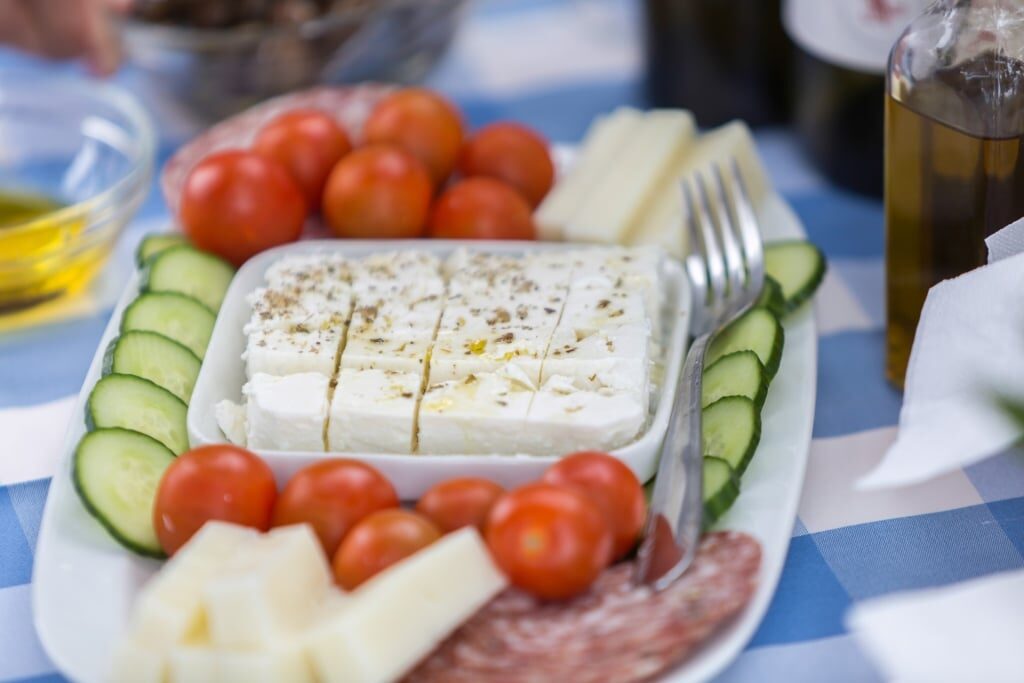
Feta cheese
There are few better ways to spend an afternoon in Greece than by the sea with a glass of crisp white and a traditional Greek salad of crisp cucumbers, peppers, red onions, and sweet red tomatoes topped with a huge slab of tangy, salty feta cheese.
Feta is part of the very fabric of Greek society and few meals are served without this brined white cheese made from sheep or sheep and goat’s milk. In fact, the making of feta is even seen in Greek mythology where Polyphemus, the Cyclops in Homer’s Odyssey, was supposedly the first cheesemaker, storing curdled milk in animal stomachs.
Little wonder, then, that despite imitations around Europe, feta has Protected Designation of Origin, or PDO status. If you’ve had feta before, in small shrink-wrapped packets from your local store, nothing compares to a slab straight from the barrel in Greece.
Friteries, Belgium
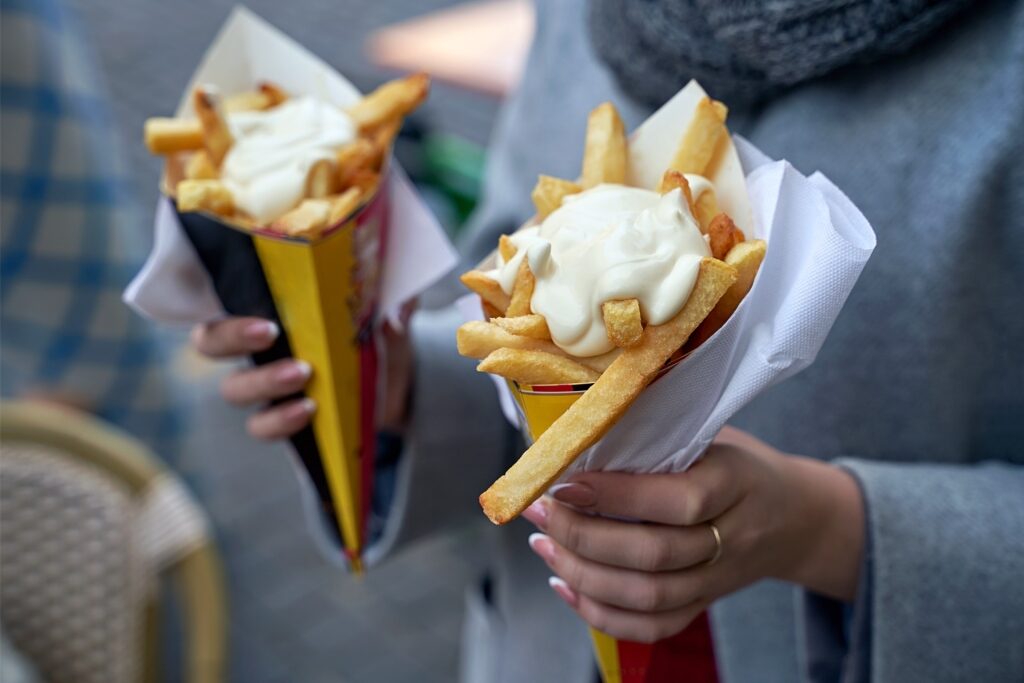
Friteries
Believe it or not, French fries, one of the most popular European foods, have actually been from Belgium all along. According to legend, poor villagers in the Meuse Valley used to fry small fish from the river until it froze one winter. As a replacement, they sliced and fried potatoes.
Now, you can find fries literally everywhere in Belgium and they are not a side dish, but the real deal. Friteries, or frietkoten are beloved staples of Belgian towns and cities, where people wait in line outside caravans and roadside stalls until late into the night for their frites fix.
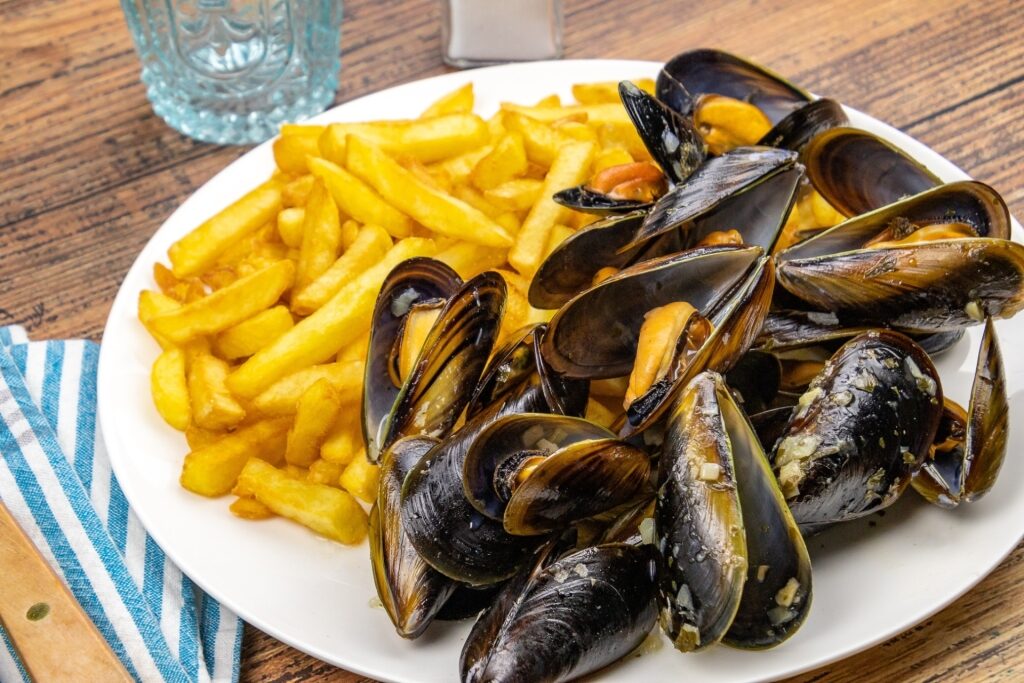
Moules et frites
True Belgian fries are double fried in beef fat with accompaniments depending on where you’re enjoying them. In Flanders, mayonnaise rules, while in Brussels “sauce andalouse”, a tangy mix of mayo, tomato, and peppers, is the order of the day. You’ll also see them alongside mussels in the classic dish “moules et frites”.
So where did the name “French” come from? It seems American soldiers in World War I encountered the dish in Belgium but assumed they were in France because the locals were speaking French—and it has stuck ever since.
Kuru Fasulye, Turkey
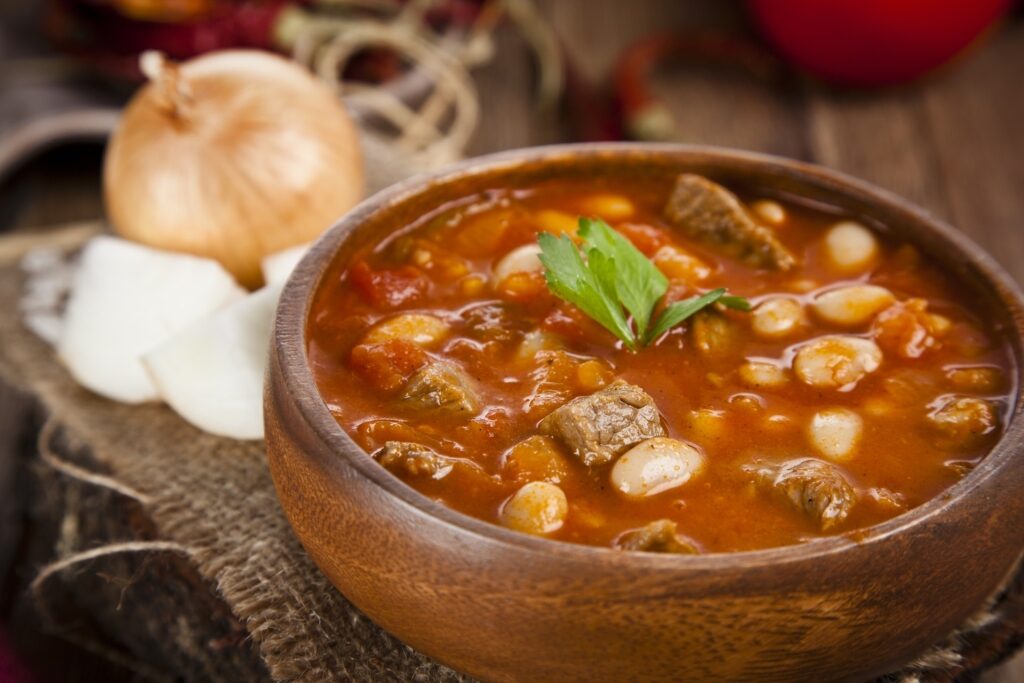
Kuru fasulye
Food from the Near East—Turkey, Israel, Lebanon, and Jordan—and that of the Eastern Mediterranean share many characteristics and have a number of common dishes. A good case in point is a white bean stew cooked in a tomato sauce, the traditional equivalent of baked beans.
In Greece, for instance, it’s called “fassolada”, while in Turkey, where it’s the national dish, it goes by “kuru fasulye”. Humble, hearty, and another comfort food staple, it’s also slow-cooked to the point where most people swear it’s miles better eaten on day two to allow the flavours to deepen.
Regional variations include the addition of spices or, in some cases, meat although the meatless version is found most often. Don’t assume that means it’s vegan or vegetarian, however; more often than not, the dish will have a meat stock as its base.
Read: What to Eat in Istanbul
Baltic Herring, Estonia
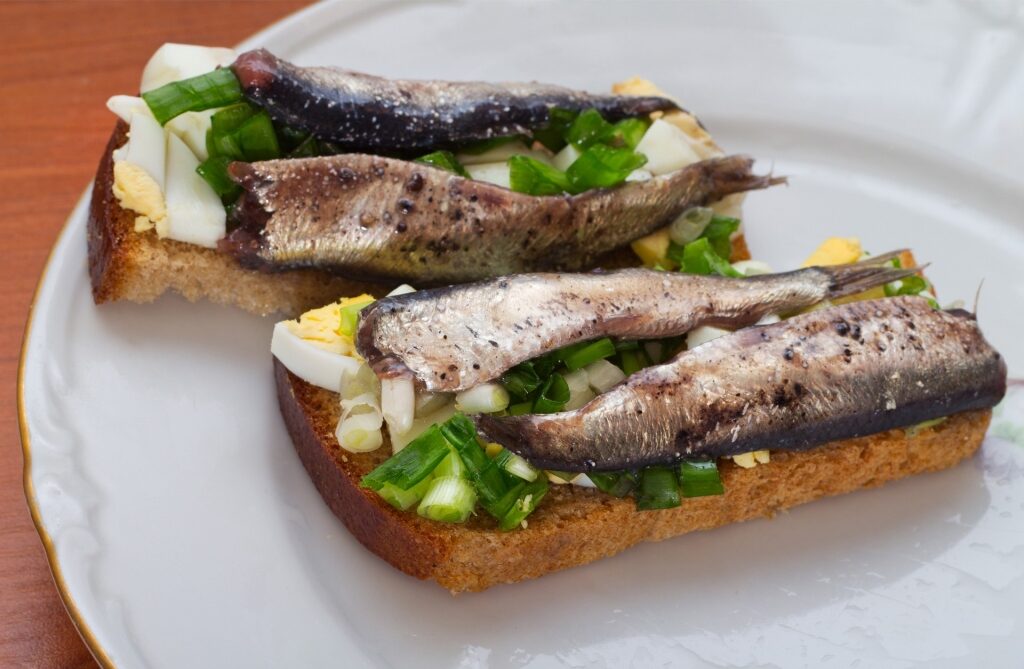
Baltic herring
Head to Estonia and Baltic herring, or raim, will more than likely be on the menu. This small, oily fish is much smaller than its Atlantic cousin, to the point where it tends to be eaten whole, heads, bones, and all. You’ll find it pickled, smoked, fried, or baked and available at every meal from breakfast to supper.
Look out, too, for a tasty dish called “räimevorm”—a sort of baked herring casserole layered with potatoes, onions, and sour cream. Cheap, abundant, and packed with healthy omega 3 fats, there’s little wonder it’s one of the country’s national dishes, to the point where there’s even a special day each May called RäimeWest. Held on the island of Vormsi, it celebrates the arrival of fresh herring.
Svíčková Na Smetaně, Czech Republic
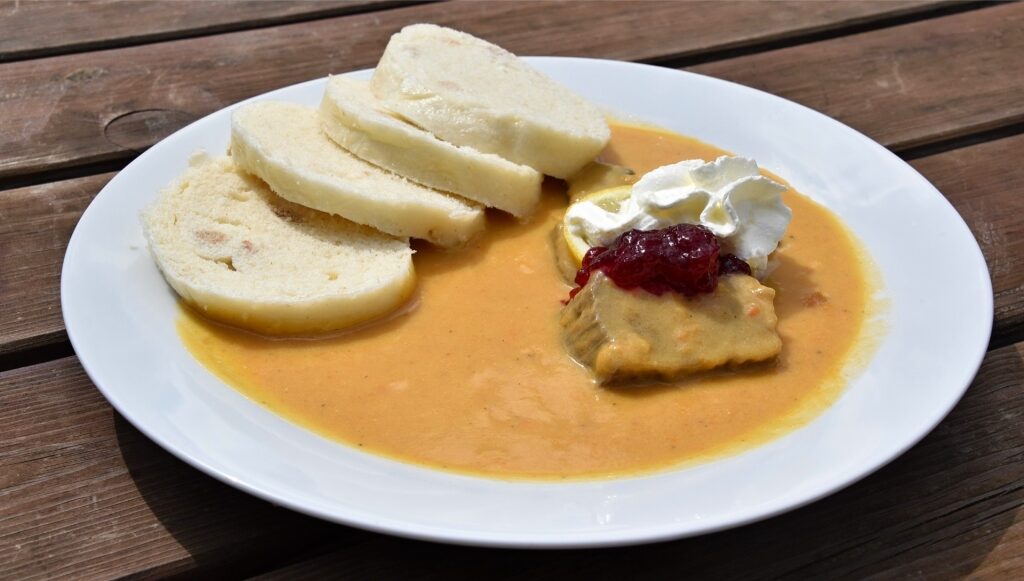
Svíčková na smetaně
This Czech—and Slovak—classic consists of marinated beef sirloin that’s then slow-roasted and served with a velvety sauce made from root vegetables and cream. But it’s much more than meat with gravy, it’s considered a national treasure, typically plated with dumplings and cranberry sauce.
Originally from Bohemia, Svíčková can now be found everywhere from Prague pubs to countryside kitchens, with it being a star at family gatherings, weddings, and other large events. While sirloin is the main cut used, some restaurants will replace that with more affordable cuts such as rump or topside, but the sauce is the real star. Done right, this mix of cream blended with carrots, parsnips, celeriac, and onions is incredibly good.
Lángos, Hungary
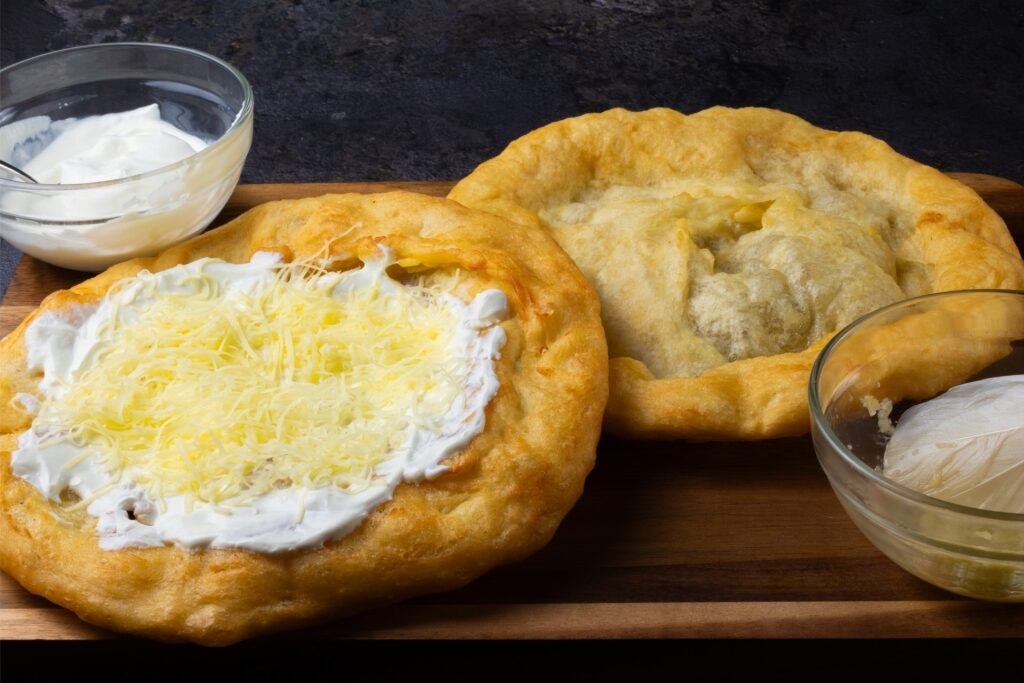
Lángos
On a health kick? Look away now. Lángos is a deep-fried flatbread, fluffy on the inside and golden on the outside, with both sweet and savoury options. All of them particularly good, none of them particularly health-giving.
Toppings can include garlic butter, sour cream, or grated cheese, as well as dustings of powdered sugar, jelly, or hazelnut-cocoa spread. Originally a remnant of leftover bread dough cooked for breakfast while the ovens were still warm, Lángos was slowly adapted to the deep-fried version now seen on street corners everywhere.
Look out for stalls where locals are waiting in line as a guarantee of quality. And always eat the dish warm—a cold lángos is a sad one.
FAQs
What are the most popular European dishes?
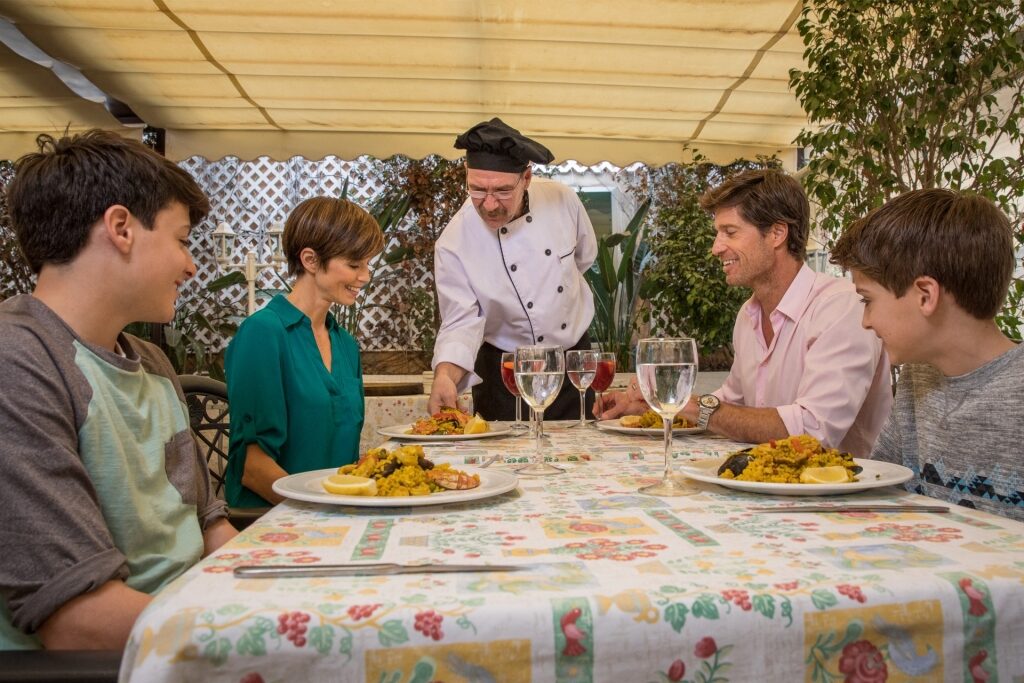
Restaurant in Valencia, Spain
On a continent where national passions run deep, trying to pick one European food over another amounts to fighting talk. But there are certainly several European dishes that have broken through their own borders to become global icons.
You’d be hard pushed to visit anywhere in the world without a pizza place, while fries have busted from their Belgian origins to become a worldwide staple. Likewise, paella has become a poster dish for Spanish cuisine, while the small plate concept of tapas has been taken and adapted in many different cultures.
Even that great British staple, fish ’n’ chips, has gone from classic take-out fare to the tables of restaurants everywhere from Australia to America. It’s a dish much-loved for the crispy batter on the first and the nostalgic comfort it brings.
What is the healthiest European cuisine?
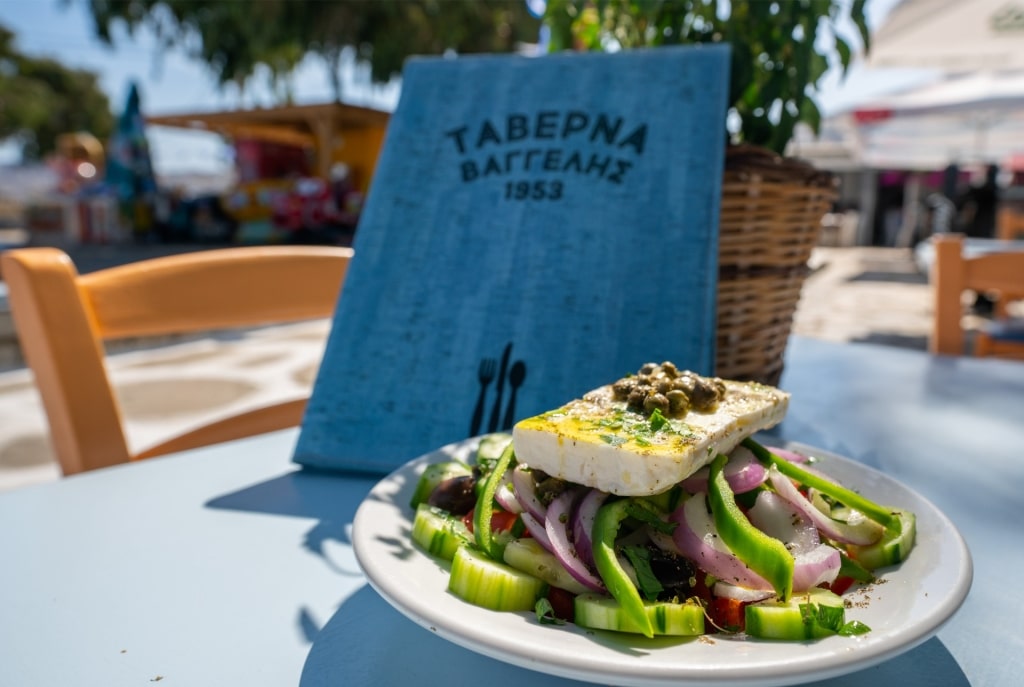
Greek salad
The title of healthiest European cuisine would have to go to the Mediterranean diet. Rooted in the traditional eating patterns seen in Greece, Italy, Spain, and the south of France, it’s been the subject of numerous scientific studies that show links to lower rates of heart disease, better brain health, and greater longevity.
Looking for proof? Two of the world’s famed Blue Zones, where people have the longest life expectancy, are in the Mediterranean, in Greece’s Ikaria and Italy’s Sardinia. The diet is based on lots of vegetables, fruits, legumes, and whole grains, as well as lean protein and healthy fats. Foods are notably minimally processed and with no added sugars.
It’s not just about nutrients, either. Meals are often shared, unrushed, and part of daily social life, where food is celebrated rather than feared.
What are traditional European breakfast foods?
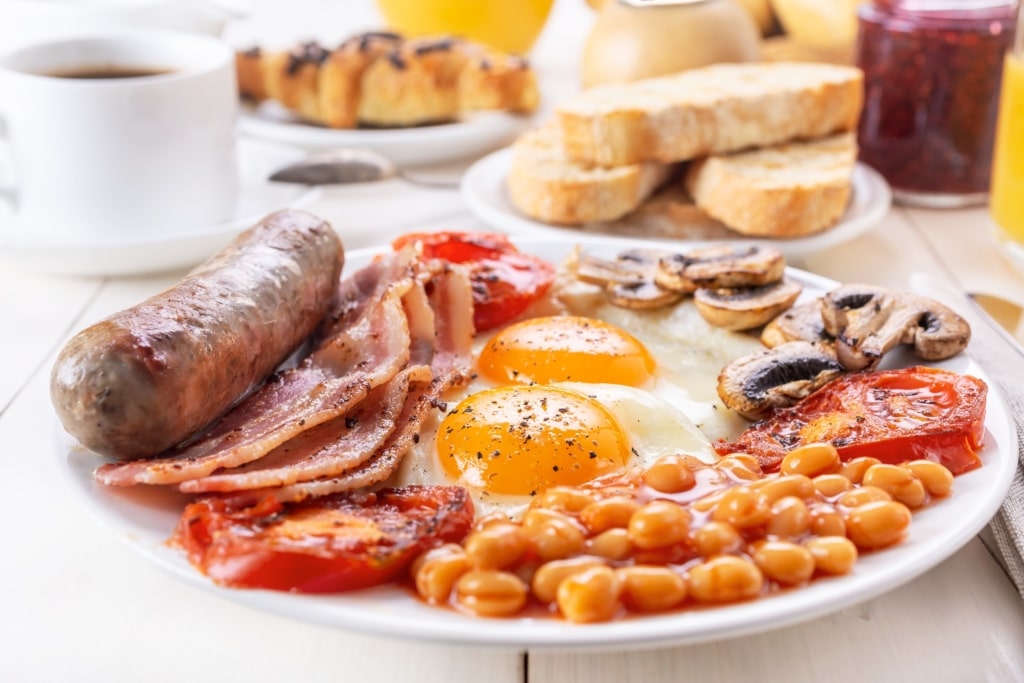
English breakfast
Breakfasts across Europe are as varied as the continent itself—from light and sweet to rich and hearty, depending on where you are. In the UK and Ireland, cooked breakfast, “full” English or Irish, still tends to rule the roost: eggs, sausages, bacon, beans, mushrooms, and toast or fried bread. The Anglo-Americanisation of world culture means you can now find a cooked breakfast in most places around the world.
In France, Italy, and Spain “continental” options are more likely. Some kind of pastry, sweet or savory, with coffee, is typical. It’s the kind of thing you eat standing at a bar rather than sitting at a table.
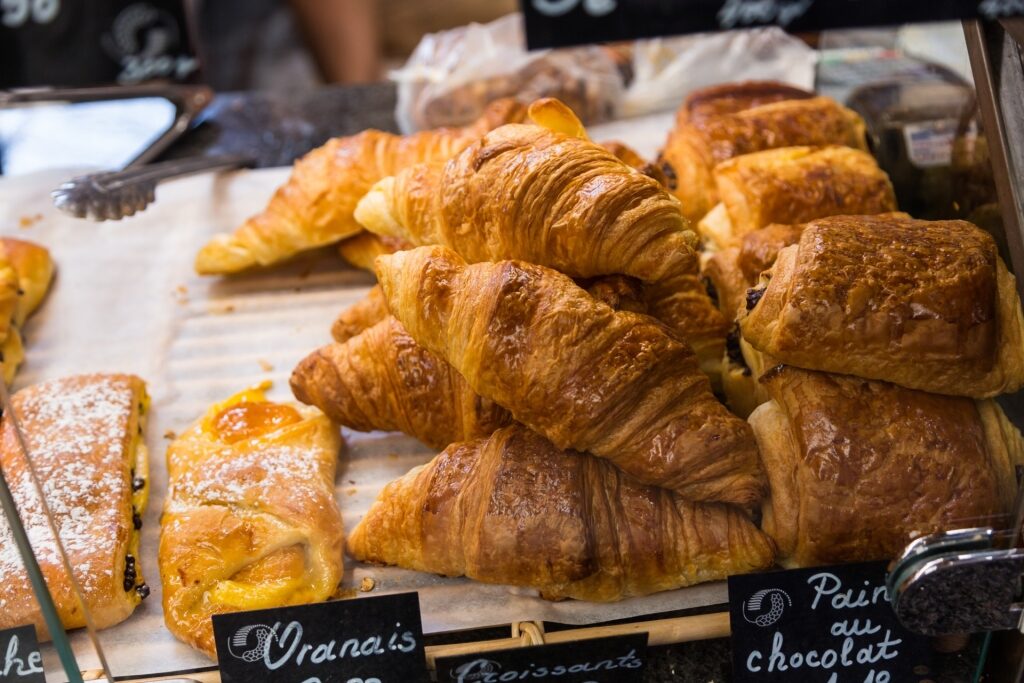
French pastries
In Germany and the Nordic countries, expect spreads of cold cuts, sometimes including pickled fish, cheeses, boiled eggs, tomatoes, breads, and jellies. Essentially, a deconstructed sandwich on a plate.
In Greece and Turkey, things will be much lighter: yoghurt, honey, and fruit are key ingredients here. Look out for Greek/Turkish coffee. Thick and strong, the caffeine levels can leave you feeling rocket fueled all day.
What are common ingredients in European cooking?
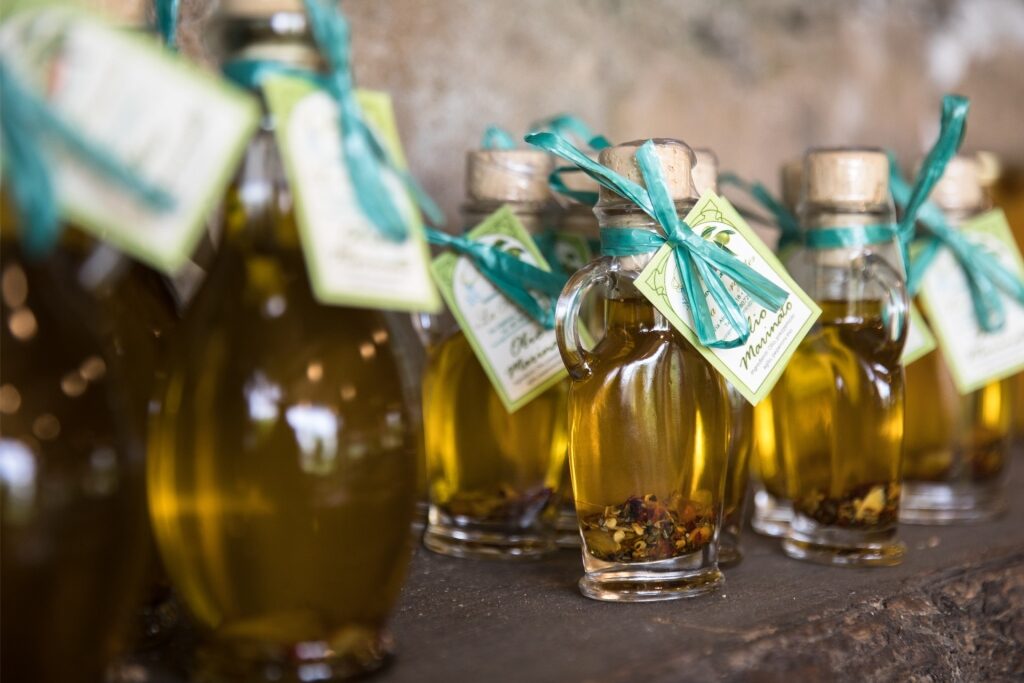
Olive oil
European food is incredibly diverse but there are a number of ingredients that tend to cross borders. Olive oil is a great example. A cornerstone of Mediterranean cooking, its use has expanded far beyond and can now even be seen in northern European dishes.
Likewise, garlic and onions remain essential aromatics in almost every corner of the continent, from wholesome Scottish haggis to Turkish bean stews. When it comes to salads, tomatoes are ubiquitous and are especially prevalent in Mediterranean dishes. Herbs, meanwhile, will vary by location, but parsley, thyme, rosemary, dill, oregano, and bay leaves will be found almost everywhere.
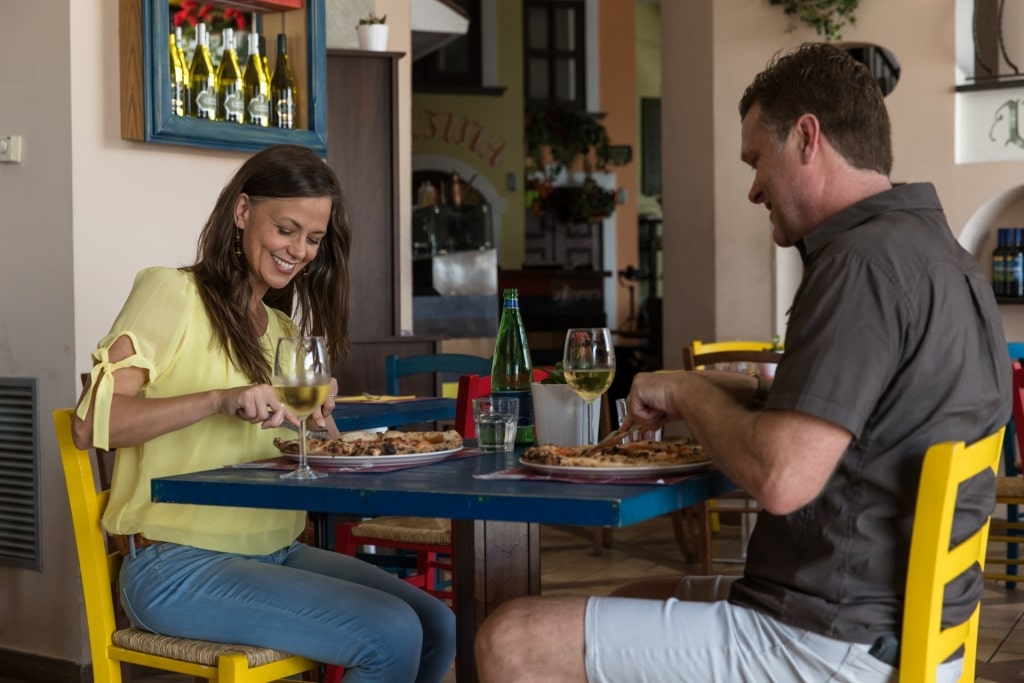
Naples
For these and other great gourmet experiences, sample the culinary delights of the continent with one of our extensive European cruises.
